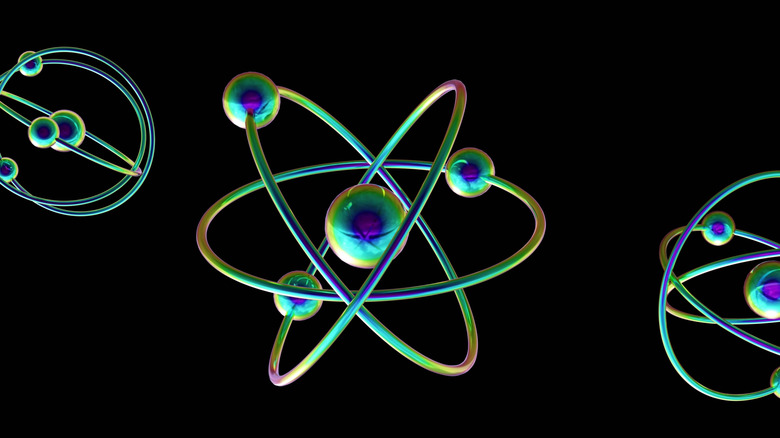The Quantum Cat Experiment That Broke An Incredible Record
Quantum mechanics attempts to understand how the universe works on an atomic and subatomic level, and so far it turns out things get pretty weird down there. Take the concept of a superposition. The laws of quantum mechanics state that objects the size of atoms or smaller are capable of existing in multiple states simultaneously. It is this superposition that Austrian Physicist Erwin Schrödinger attempted to describe (and criticize) with his famous "Schrödinger's cat" thought experiment, in which he imagined a box containing a cat and a radioactive atom which will decay at random, thereby killing the cat at some point. Until the box is opened it is impossible to know if the atom has decayed and therefore whether the cat is alive or dead. Therefore, the animal is said to exist in a superposition where, until it is observed, it is both alive and dead simultaneously.
But the idea of a superposition is not just a theoretical concept described in thought experiments. Studies have actually been carried out where subatomic particles were observed existing in superpositions. In 1996, researchers recorded a "Schrödinger cat”-like state in a single atom, trapping a 9Be+ ion that had been cooled by laser and prepared in a superposition of different states simultaneously. In 2010, physicists at UC Santa Barbara placed a mechanical resonator in a superposition, proving that quantum mechanics could also be applied to larger objects. Multiple other studies have proven the existence of a quantum-level superposition, but in all cases, that state was extremely fragile and lasted fractions of a second.
Now, researchers in China have managed to hold atoms in a "cat state" superposition — a reference to Schrödinger's thought experiment — for a full 23 minutes, breaking records and pushing quantum mechanics to its limit.
Researchers produced the longest recorded superposition
While previous experiments have managed to produce an observable superposition, that superposition itself has always been so incredibly fragile that it has collapsed almost immediately. Now, however, researchers at the University of Science and Technology of China have managed to produce a cat state superposition that lasted for an unprecedented 23 minutes and 20 seconds.
The team outlined their findings in a yet to be peer-reviewed paper published on the preprint site ArXiv, wherein they detail how they used 10,000 atoms of ytterbium — a soft silvery metal — to produce this incredible outcome. The atoms were cooled to almost zero degrees and trapped with laser light. The researchers were then able to manipulate each individual atom, putting them into two different spin-states. ("Spin" refers to the angular momentum of a body and is an extremely complex concept in and of itself.) The atoms being in two different states simultaneously constituted the quantum cat state, which lasted for an incredible 1,400 seconds — the longest such a state has ever been observed.
Why is it so hard to maintain a superposition?
When a subatomic object is placed in a superposition it is said to "cohere." This refers to the idea of an object having wave-like properties. When that wave property is split in two and one interacts with the other, the object is essentially two waves at the same time and is therefore said to be in coherence — i.e. the two waves are cohering with one another to form a new wave that represents the superposition of being both at the same time. Maintaining coherence is one of the big challenges of creating superpositions, as environmental factors — from thermal changes to electromagnetic interference and even simple interaction with air particles — can stop atoms and subatomic particles to decohere very quickly.
In the Chinese researchers' experiment, the team used what they termed a "decoherence-free subspace", which essentially means the ytterbium atoms were kept in an environment where almost nothing could disrupt their ability to cohere in a superpositional state. The team is now looking to develop a better vacuum system that would prevent decoherence for even longer.
Why is this a big deal?
Maintaining a superpositional state for 23 minutes is already a major breakthrough, and it will likely have major significance in the realm of quantum computing, where maintaining coherence is fundamental to the function of a quantum computer. These machines rely on qubits, the quantum version of a traditional binary bit, which, rather than either being a one or zero, can exist as both at the same time. As such, the ability to create an environment where these superpositions can be maintained is vital to the function of the system overall. What's more, maintaining a superposition for this long has the potential to help support what's called quantum metrology, a form of measuring things with ultra-high precision that goes beyond standard metrology.
At this stage, however, it's important to note that the experiment is simply one step in the right direction. The complexity of maintaining the kind of controlled environment required to produce this remarkably long-lasting superposition means that using this same approach for other applications would be extremely difficult. Regardless, this is still a remarkable achievement that bodes extremely well for the future of quantum mechanics and our understanding of it.



